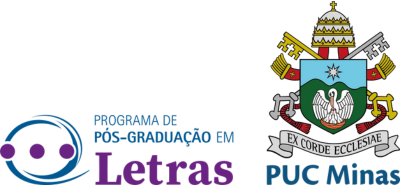The intertext of modernism in Crônica da casa assassinada, de Lúcio Cardoso
DOI:
https://doi.org/10.5752/P.2358-3428.2015v19n37p257Palavras-chave:
Lucio Cardoso, Crônica da casa assassinada, Transmutação, Modernism, Postmodernism.Resumo
This article reflects on the many opinions about the author of the of Crônica da casa assassinada as a modernist or postmodernist writer. Examining the narrative techniques used by the author, maybe influenced by his wide reading of foreign literatures , it may be possible to clarify a little the question of the position of Lúcio Cardoso in relation to the literary movements of the twentieth century. His personal experience as a writer passes through the process of impersonalisation, transforming his masterpiece into a universal symbol. It is hoped that this paper will show how this transformation of his personal experience comes across to the readers in the form of a modernist and not as some say, a post modernist novel.
Este artigo reflete sobre as muitas opiniões acerca do autor da Crônica da casa assassinada como um escritor modernista ou pós-modernista. Examinando as técnicas narrativas utilizadas pelo autor, talvez influenciado por sua vasta leitura de literaturas estrangeiras relatadas, seria possível clarear um pouco esta questão da posicionamento de Lúcio Cardoso com relação aos movimentos literários do século XX. A experiência pessoal do escritor passa por um processo de impessoalidade, através da transmutação e amalgamação, transformando a obra em símbolo universal. Espera-se com esta comunicação discutir o modo como essa transmutação chega ao leitor em forma de um romance modernista e não, como às vezes se afirma, como um romance pós-modernista.
Downloads
Referências
CARDOSO, Lúcio. Crônica da casa assassinada. Rio de Janeiro, Civilização Brasileira, 1999.
CARDOSO, Lúcio. Diário completo. Rio de Janeiro: José Olympio/INL, 1970.
MAJOR, Clarence. Reflex and Bone Structure: A Novel. The Fiction Collective, New York, 1975
FEDERMAN, Raymond. Take It Or Leave It. The Fiction Collective, New York, 1997.
Downloads
Publicado
Como Citar
Edição
Seção
Licença
O envio de qualquer colaboração implica, automaticamente, a cessão integral dos direitos autorais à PUC Minas. Solicita-se aos autores assegurarem:
- a inexistência de conflito de interesses (relações entre autores, empresas/instituições ou indivíduos com interesse no tema abordado pelo artigo), e
- órgãos ou instituições financiadoras da pesquisa que deu origem ao artigo.
- todos os trabalhos submetidos estarão automaticamente inscritos sob uma licença creative commons do tipo "by-nc-nd/4.0".









